Keywords: Minamata disease; quadriceps constricture; childhood broncheal asthma; emotional deprivation syndrome; fatal and neonatal behavior; mind and body programs; imitation and learning; biology of culture.
___________
Noboru Kobayashi, National Children's Hospital, University of Tokyo, 3-35-31 Taishido, Setagayaku, Tokyo 154, Japan.
A child grows and develops through interactive processes between his or her inborn programs and the environment, which is composed of micro-, mini-, meso- and macro-ecosystems. In these ecosystems, there are natural, physio-chemical, biological and sociocultural ecological factors. Amongst them, the sociocultural ecological factor is the most important, which should be analyzed on a biological basis by applying the system information theory. The article elaborates the theoretical framework of such analysis, and illustrates this perspective through various empirical researches, underlining the interaction between biological, psychological, cultural and economical factors. Emphasis is put on both the need for theoretical elaboration and the applied aspect of the ecological perspective related to the complex medical and mental health problems of the modern world.
The problems of health and disease for children vary considerably, depending on the area as well as the time. In order to solve these problems, it is important to collect information, to analyze it for risk factors, and to draft counter and, particularly, preventive measures on the basis of these risk factors. This paper emphasizes the importance of "child ecology" as a common theoretical basis for this analysis.
If we apply the concept of ecology to human beings as human ecology, we must consider the special features of human beings. They have created culture and civilization during the evolutionary process, and have organized a family and social life with religion, philosophy, art and other kinds of thinking and performance in the human network system. At the same time, we have to admit that the human being is a primate, "the naked ape", one of the mammals. Therefore, in human ecology, culture and civilization should be interpreted in a biological context.
Child ecology is a branch of human ecology, which deals with the interaction of children with their environment in life, including their human relationships, particularly in terms of their growth and development.
In order to systematize child ecology, sociobiology, cultural and medical anthropology, behavioral science, system-information science, the other new disciplines must be applied in addition to the standard ones of growth and developmental science, psychology, education science, and medical sciences such as pediatrics, child health, microbiology, epidemiology, public health, hygiene and other clinical and basic medical sciences. In other words, child ecology must be holistic, and can be applied to every aspect of the life of children.
The micro-ecosystem is the space or the world which a child can assess or grasp through the sensory system and through interactive processes with other human beings. This is the human network immediately surrounding the child. In the case of a fetus, the micro-system is the uterine space of the mother, while in that of an infant, it consists of interactive personal relationships mainly with the parents, and later, of course, with siblings and such other persons as grandparents and those in the extended family.
The mini-ecosystem is the family, home and house as a basic unit in the community and society. It includes not only such software as human relations and culture, but also such hardware as housing structure and sanitation. Outside the mini-ecosystem there is the macro-ecosystem, which is the community and society.
Between the macro-ecosystem and the mini-ecosystem, the meso-ecosystem functions as a connecting link, which includes kindergartens, nurseries and schools, all of importance for children. This system supports the transition of children from the family into society as they grow and develop.
If we can make a schematic plan of the ecosystem for children, this will be a concentric structure as shown in Fig. 1.
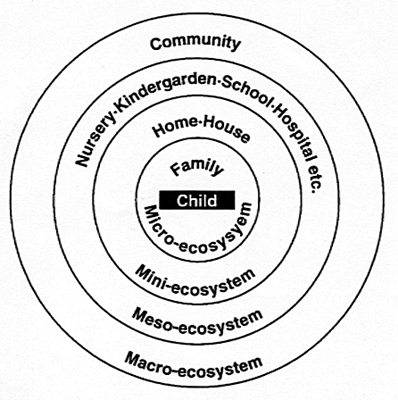
Fig. 1. Concentric circular structure of the ecosystem for child.
The degree of influence of these ecosystems on a child changes with age, in other words, with growth and development. Fig. 2 shows this trend from fetal to the neonatal-infantile, and to early childhood and school periods.
As the micro-ecosystem, the maternal body has an important influence on the fetus not only in a physiochemical but also in a cultural way. As for the former, it is clear that intrauterine growth retardation can be caused by the mother's smoking and other factors. However, as for the latter, I have to mention that since mothers may be watching TV for many hours a day, as in Japan, we may have to consider this influence of the mini-ecosystem on the fetus, since music and voices from TV can reach the fetus in utero.
After delivery, the fetus continues to interact with the mother as the neonate, but, of course, in a different way from that of the micro-ecosystem. At the same time, the mini-ecosystem, the family and house, becomes more important in its influence, since the father, siblings and other family members start to interact with him or her, and living conditions also influence the health of infants.
As children grow older, they start to go to nurseries, kindergartens and schools. That means that the meso-ecosystem becomes more important. We have to consider that the meso-ecosystem itself is influenced also by the macro-ecosystem, such as the governmental administration of health and welfare, as well as of education.
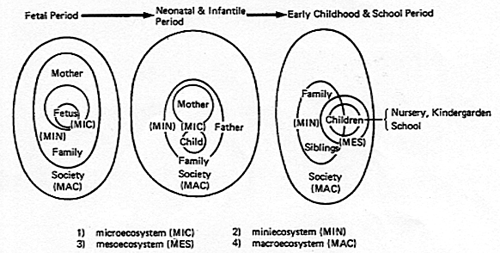
Fig. 2. Alteration in the pattern of child ecosystem by age.
We can easily understand what the natural, the biological, the physiochemical and the sociocultural factors are. However, we have now to understand that these natural ecological factors can be altered by technology as in construction on the land, that the biological ones range from HIV virus to parasites, that the physiochemical factors are more complex than ever, since newer chemicals are being produced all the time, and also that the sociocultural factors are very different in each community and society.
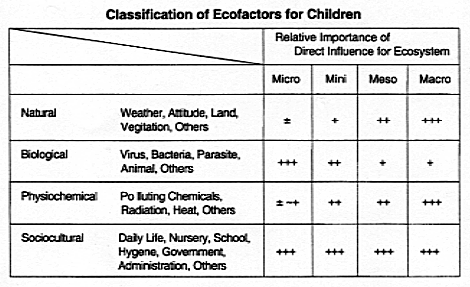
Table 1. Classification of ecofactors for children.
The non-genetic risk factors are generally ecological, and we are exposed to them in utero and continuously through life, wherever we live. The genetic risk factor certainly causes many specific conditions and diseases, but many disorders of the body and mind of children are caused by interaction of genetic and non-genetic factors. This is particularly so when we consider the problems of a child with a specific constitution, which is genetically determined.
However, even when there is no genetic risk factor for a given child, some of the ecological factors can become risk factors causing specific problems. In such a case, a single ecological factor is not usually a specific risk factor by itself for such problems. In addition, the sociocultural factors very often play a key role in causing such problems, together with other ecological factors.
Minamata disease - Minamata disease appeared in the 1950s, and was found to result from eating fish caught in Minamata Bay, polluted by chemical wastage from a fertilizer factory. We had never foreseen the appearance of this tragedy. It occurred in the early period after World War II, when Japan was trying to catch up with the rest of the world after the economic collapse due to the war. We have, therefore, to consider the economic background of Minamata disease, which is a sociocultural factor. It is a tragedy that this disease also occurred in the fetus, in the form of fetal Minamata disease, and thus even became an element of the micro-ecosystem.
Quadriceps constricture - The quadriceps constricture or stricture is another important physical problem to be considered. This is a fibrosis of the quadriceps muscles of the thigh, which appeared endemically among young children in 1960-1970 in Japan. It was originally considered to be congenital, but was later found to be due to intramuscular injections of drugs, particularly antibiotics, administered during the neonatal and infant periods, when the mass of the muscle is small in volume. Although this might certainly be considered as malpractice in some cases, the patients could be regarded in a sense as victims of our medical care system. The reason is that the practicing physician's income is mainly calculated by the amount and price of drugs prescribed, the route of administration, the number of laboratory tests carried out and other work done, rather than by their medical judgement, technique or the quality of their medical care. These medical care policies are specific sociocultural factors for quadriceps constricture in children.
Childhood bronchial asthma - The number of cases of bronchial asthma has increased in Japan, in contrast to those of Minamata disease. The majority of children with this disease are allergic to mites, although air pollution, psychological and other factors certainly contribute. As the Japanese economy has improved, the houses have become westernized, and are equipped with heaters, air-conditioning, carpeting and other housing amenities. All of these contribute to the proliferation of mites. Sociocultural factors, therefore, are playing a key role in this disease.
New morbidities and new mortalities - When we consider the sociocultural factors in recent social trends, we have to point out the so-called "new morbidities and new mortalities", which are psychosomatic disorders and behavioral problems of children, including violence, homicide, school refusal and absenteeism, suicide and also child abuse by parents. We did not see these in the pediatric textbooks of our student time, nor in our society or even in our clinics until around the 1970s. At present we have to admit that these problems have become more frequent in many clinics in Japan, and to find counter and preventive measures against them. Of course, we should include children's AIDS, which is not a simple medical problem, but rather a sociocultural one, since it is related to behavioral problems of the parents and of society.
We know that ecological considerations are essential for the new morbidities and new mortalities in general. For these problems, including that of child abuse, the sociocultural risk factor should be considered, such as parents-child bonding failure, family infrastructure instability, schooling inadequacy, information excess and rapid alteration of norms in society.
It is clear that sociocultural factors contribute strongly to child abuse. The risk factors for this problem in Japan are found to be almost the same as in such developed countries as USA and UK, that is, on the child's side, the small-for-date child with physical and mental problems, and on the parent's side, abnormal personality, economic problems, such marriage difficulties as divorce and discord, the unwanted child, and the physical and mental burden of child care. Also, it should be mentioned that early separation from the parents and delay in reunion are risk factors for child abuse.
However, we have found an interesting difference in the pattern of twin abuse; that is, that one twin is abused significantly more frequently than the other in Japan, compared with the statistics of the USA and other developed western countries (Table 2). The reason is considered to be a tendency to partiality (favoritism) in the parents of twins in Japan. This is an example of problems that are mainly due to sociocultural factors (7).
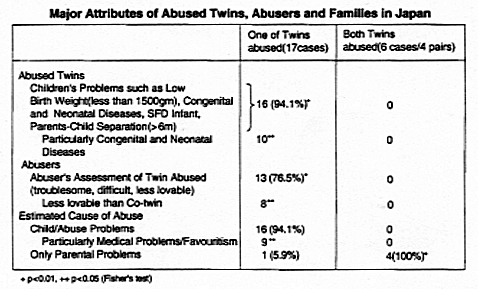
Table 2. Major attributes of abused twins, abusers and families in Japan.
The new morbidities and new mortalities are manifestations of social pathologies. The Agency for Economic Planning of the Japanese government calculated the New Social Index for Deterioration of Society and Family in Japan on the basis of the number of children involved in drug abuse and other criminal activities, single-parent families, suicides of children and aged persons, school absentees, runaway children and so on. The index was fixed at 100 in 1980 and has increased gradually, as shown in Fig. 3. This index may well be considered as an ecological indicator of the sociocultural state of a given society or community (8).
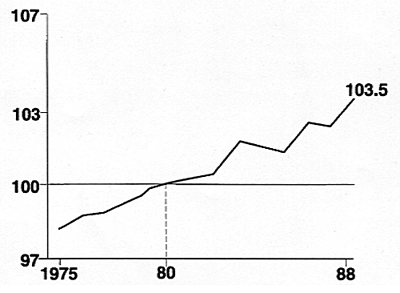
Fig. 3. New social index of deterioration of family and society in Japan.
The program means a set of genetically determined biological codes that govern the function of these systems of the living body, including the brain.
When these programs of the mind and the body of a child operate well, the child is in good health, and then the further programs of growth and development are also tuned smoothly, with the result that the child thrives.
This concept model is well supported by studies of the emotional deprivation syndrome and further by those of fetal and neonatal behavior.
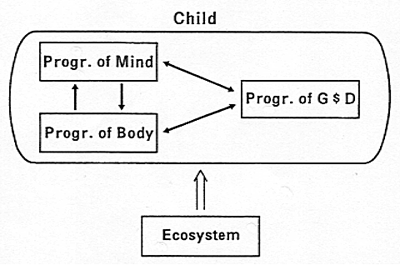
Fig. 4. Conceptual model of child based on system-information theory.
The mother did not nurture this child well, did not want to take care of him. This is the reason for the cessation of the patient's growth and development. At the age of 3 or 4 years, when the child had developed enough to understand the situation, there was significant growth both in weight and in height when he was cared for by the grandmother. But the increase in height stopped completely and the weight even decreased when he was brought back to his mother's home.
The child was then institutionalized by the welfare service at the age of 6 years to start schooling, and both weight and height showed a rapid catch-up. In other words, the child was happy in the institution, felt joie de vivre, and this is the reason why he grew very well somatically, that is, the programs of growth were functioning smoothly. It is also important to note that the IQ of this child was measured as only 50 during the most miserable period when he was with his mother, but was 95 in the institution, showing that the program of mental development was also activated.
This case study indicates clearly the presence of these programs. When the child was cared for in an emotionally rich environment, not only the programs of the body but also those of the mind such as learning and other intellectual abilities also functioned well, showing significant IQ improvement, that is, good mental development. This indicates that tenderness, love, and humanity are essential for these programs to run in the child.
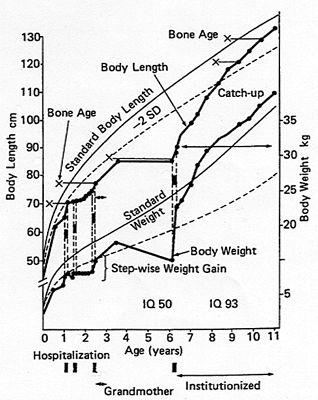
Fig. 5. A case of emotional deprivation syndrome
(Suwa, Kanagawa Children's Hospital).
It was reported that a fetus in the 14th week of gestation impacted his head against a myoma in the mother's uterus. The fetus tried to dislodge his head by stretching his extremities against the uterine wall, but this was not at first possible. What the fetus had done finally was to turn the head horizontally and successfully dislodge himself. Even at 14-weeks-old the fetus can show this kind of purposeful and coordinated behavior, which also indicates the presence of the programs under discussion. Of course, there may be opposing opinions of this interpretation, but it is confirmed at least that a fetus at this stage has a program for such behavioral movement.
We have studied the influence of TV on the fetus and young infant. This is an important observation for evaluating the ecological significance of the sociocultural factors during the fetal period. It has been reported that the heartbeat of a fetus of 12-weeks gestation responds to music heard on TV. This indicates that the auditory sense is functioning at this stage, and may also indicate the appearance of a primitive feeling for music (14, 15).
It was also noted that the body movement of the fetus becomes quite active, when the mother is listening to her favorite music. The mechanism of this phenomenon is not yet known, but it may be due to transfer of a biologically active substance or substances from the mother, whatever their nature might be, to the fetus via the placenta. This observation suggests the possibility of enhancing the growth and development of the fetus by such sociocultural means (14, 15).
We know that respiration starts spontaneously, when the program of respiration is switched on at birth with crying. The baby then starts to look around after calming down. This is called "neonatal alertness". The baby starts to seek information even at the beginning of life.
Various investigations indicate that a neonate's five senses are already developed at the time of birth. Neonates can see an object at a short distance, can taste and react particularly well to sweet tastes. Their olfactory sense is good enough to be able to identify the smell of the mother from birth, and their tactile sensation is evidenced by cessation of crying when held in the mother's arms after delivery.
The presence of the five senses in the neonate may indicate the existence of programs of the mind, although they may well be in a primitive form at birth, since sensation induces the state of mind. The mind encompasses the intellect, the emotion, and the will. Programs of the mind are switched on by both indigenous and exogenous mechanisms: the information obtained by the sensory system. Running the programs of the mind may indeed be a state of mind, which is a manifestation of excitation of a specific neuronal network of the brain.
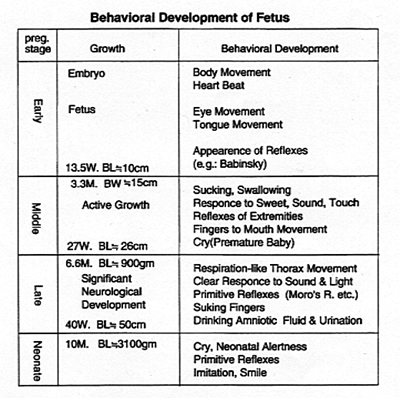
Table 3. Behavioral development of fetus.
 . When the mother was asked to leave the experiment apparatus, so that the baby was separated from her and became alone, the forehead skin temperature dropped, together with that around the nose, indicating that the baby was in stress due to separation from the mother (16, 17).
. When the mother was asked to leave the experiment apparatus, so that the baby was separated from her and became alone, the forehead skin temperature dropped, together with that around the nose, indicating that the baby was in stress due to separation from the mother (16, 17).
The mechanism of changes in the distribution of skin temperature over the face has yet to be fully elucidated. The first possible one may be the secretion of epinephrin (adrenalin). However, if the capillary vessels contract due to epinephrin, then the temperature should drop all over the face. Since it does not, we assume that the drop in temperature of the forehead may be due to other mechanisms such as changes in the balance of blood flow between the intracerebral and the facial arteries, i.e., the blood flow to the brain and to the facial muscles will be changed by the facial expression due to emotion.
The temperature changes in the faces of 3 infants in this experiment are shown in Fig. 6. The temperature dropped on separation, but the recovery from the drop showed different patterns: on reunion, some babies returned to normal temperature, but others continued to be low, later crying, and showing no rise in facial temperature, indicating protest or sulkiness even after the mother came back (16).
Our studies point out some important facts. The attachment of the baby to the mother has already been established 2 or 3 months after birth. Conventionally, many psychological studies have maintained that attachment did not build-up until at least 6 months or more after birth, but this study indicates a much earlier establishment. Another important fact is that infants have already organized the neuronal networks necessary to experience such emotional states even at the age of only 2 or 3 months. Thus, infants can feel a sense of fear or loneliness when they are separated from the mother. There the programs of the mind are certainly operating.
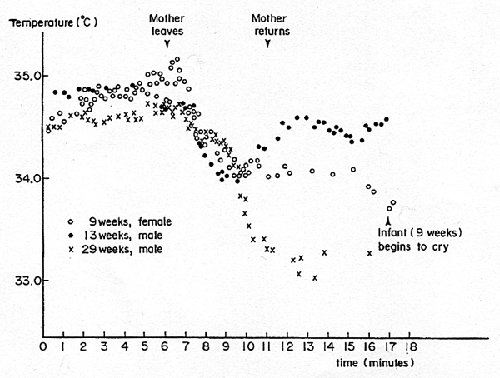
Fig. 6. Facial skin temperature change of infants on separation from the mother measured by telethermography.
However, babies do not have letters nor words, but they can cry, smile or laugh, and also move their hands and legs. In order to make a quantitative evaluation of the behavioral language of babies, we applied a computer pattern analysis method to see how the movements of their hands respond to the spoken language of the mother or other adults (18-21).
When the mother is talking to a few-days-old infant, saying "This is mama" and so on, a video camera records the movements of the neonate from above.
Each frame of the recorded videotape is divided into 245 by 312 pixels, and the baby's hand is contained in a pixel matrix of 64 by 64. We calculate the brightness of each matrix of 4 by 4 pixels, that is, the images are decomposed into 4 by 4 matrixes to produce a mosaic pattern of the matrix of the hand. For every 60th of a second, we calculate the numbers of appearing and disappearing matrices as an index of the movement of the hands (Fig. 7). We can thus obtain a wave graph of hand movement (Fig. 8).
The mother's voice can be quantified and expressed in the form of waves by measuring differences in voltage. Thus, we can obtain two waves of the hand movement and the mother's voice, and calculate a cross-correlation curve to see whether there is any synchronization between the two curves.
Fig. 9 shows the results. In Curve (A), a peak of synchronization is observed approximately two seconds after starting to speak. When the mothers are talking to their beloved babies very casually and freely, there is also a peak on the right, that is, the mother reacts to the movement of the baby's hand and speaks.
The next, Curve (B), was taken when we asked the mother to read out a sentence or two similar to free talk. The peak on the right is no longer present. The left peak of synchronization came with a time lag of approximately one second after onset, which is shorter than that in the previous free talk. Thus, there is a time-lag difference in response to the way the mother is talking. This probably because the baby can sense when the mother is not talking naturally.
As shown in Curve (C), we randomly mixed fragments of recorded talk on the tape. The hands still continued to move, when the baby listened to this control voice, but no synchronization peak was observed.
This result points to the presence of a program of communication built in babies at birth, and this must be a prototype. The babies start to mimic or imitate language and then learn how to communicate by means of language, using this program through interaction with the parents and others. Then, at school, they learn how to encode that spoken language with letters and symbols, i.e., they learn to write. In this way, human beings master a rich means of communication, and can organize human relations and live in a family and society.
This synchronization in human communication has been observed not only in the case of Japanese, but also in English, French, and Chinese babies. As the mother keeps talking, the synchronization of the hand movements of the baby with the voice of the adult gradually develops, as if it was pulled in. This synchronization phenomenon occurs in a non-linear wave or rhythm, and we call it "entrainment". It is interesting that the very prototype of communication shows this entrainment phenomenon. Entrainment is now found at the basic levels of the molecule and cell. Thus, it can be said that biological rhythms are present in life activities in general.
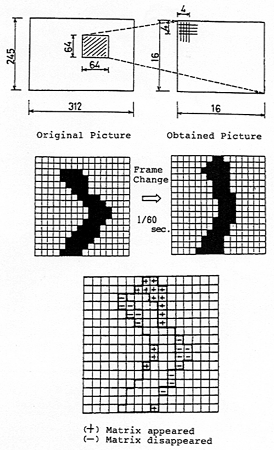
Fig. 7. Quantitative evaluation of hand movement of infant during talk with mother.
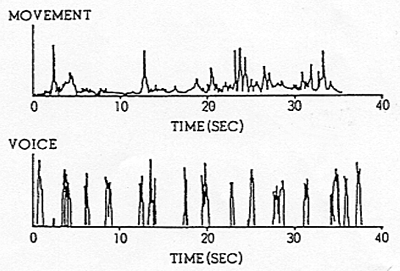
Fig. 8. Recorded waves of baby's hand movement and mother's talk.
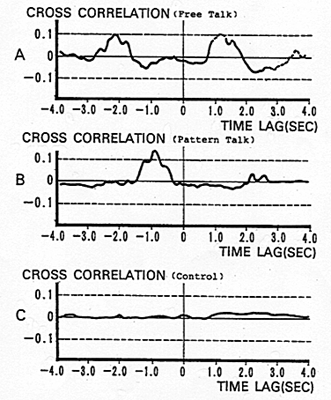
Fig. 9. Cross-correlation curves between hand movement of infant and mother's talk.
The imitating or mimicking behavior of infants is well known. When you stick out your tongue slowly in front of a baby, he or she moves their lips and shows the tip of their tongue, mimicking the action of your mouth (11, 22, 33).
The most striking fact is that even the neonate can mimic or imitate, and therefore this program is present at birth. It is the other side of the coin of learning, and may be the biological basis of education in relation to such other higher brain functions as memorizing, thinking and believing.
The primitive gait or stepping reflex seems to be useful for understanding the programs of imitation and even learning. At the time of birth, when the neonate is held by both hands, and the feet are allowed to touch a solid board, the baby shows an ambulant movement. It is considered that the neonate has a program of "gait" or "walking". This reflex disappears within 1 or 2 months, because of lack of cognition of three-dimensional space and inadequate muscle power of the lower extremities for weightbearing. If this program still remains operative, if the stepping reflex can still be elicited in the months after birth, then the baby is considered to have some abnormality of the brain and will be subject to clinical and laboratory investigations to find the lesion. But after about 12 months, the healthy baby will be able to recognize objects three-dimensionally and will have enough muscle power to support the body weight. Then they start todding and walking, when the program of gait is switched on again.
Thereafter, they start mimicking and imitating the surrounding children or teachers at the kindergarten or the nursery, and start running, skipping or even dancing. The program of gait obtains additional information from those of imitation, and even learns to modify itself.
Almost all babies in Japan will be exposed to television soon after birth; at approximately the age of 3 months, 30% of them apparently start to stare or possibly to watch it. At 12 months, they may watch for nearly 2 h. Fig. 10 shows that the behavioral development of the baby with respect to television gives important insights into the mimicking of the imitating program, and furthers the learning program (14).
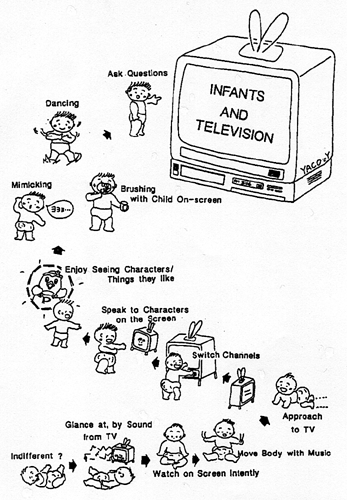
Fig. 10. Behavior development of infant responding to television (cartoon).
They point out that only humans have true culture, that is, "euculture". The other animals have some primitive culture, "urculture", while the majority have no culture, "aculture". Culture depends on the abilities of mimicking, learning, teaching, and substantiation or embodiment of what one is thinking by symbols, letters and so on. It is important to note that those who have true culture are only those who have a well-developed ability of substantiation or embodiment in addition to mimicking, learning and teaching; that is to say, only human beings (Table 4) (24).
According to the literature, such primates as chimpanzees have insufficient power of substantiation. However, they can fish for ants with a tree branch, or use stones to strike at enemy animals. So they may have a kind of protoculture. It is known that the Japanese monkey washes potatoes with seawater to remove sand, or make sounds by hitting stones together. This indicates a burgeoning of culture. However, the Myna bird can mimic human conversation, but this bird does not possess culture.
These sociobiological considerations can be applied to human culture. It can then be analyzed by its ecological factors on a biological basis.
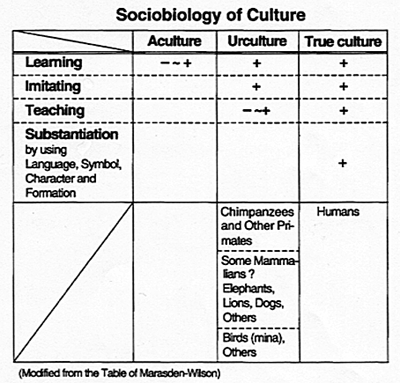
Table 4. Sociobiology of culture.
First, the child has such innate programs of the body as circulation, respiration, digestion and others, and also such programs of the mind as those of the emotions, the intellect, and the will, although these may be only "sprouts" of the mind. However, these programs activate the corresponding neuronal network systems not only by an inner mechanism, but also by the stimulation of the information obtained from the ecosystems through the sensory program.
The five sensory systems collect information from the ecosystems from birth, or even from the fetal period, and then correlate the programs of the body and the mind from the inside. The child also has programs of growth and development, which are tuned by those of the body and the mind. The energy for growth is supplied as nutrition by the programs of the body, particularly by the program of digestion. That for development, particularly mental, is supplied as information by the programs of the mind, particularly by those of the sensory system. To run these programs smoothly, children need good nutrition as well as good information. When the programs of the mind and the body cannot run well, those of growth and development are not well tuned, and such children do not thrive, as is seen in the emotional deprivation syndrome. Therefore, tenderness, love, and humanity are important for them.
Children are surrounded by the ecosystem in daily life, in other words, they are living in the family, school, and community. The program of the mind is particularly affected by exogenous stimulation from the ecosystems: the micro-, mini-, meso-, and macro-ecosystems, all of which give such information. Each ecosystem interacts with another at different levels, and is influenced by natural, biological, physiochemical and sociocultural ecologic factors. Amongst them, human factors - that is, the element of human networks, in the form of political and economical structures - are the most essential, since these structural features represent important determinants of the systems of education, health and welfare. But the analyses have to grasp the interplay between factors, they must be interdisciplinary and be based on the perspective of child ecology.
A summary of this article was presented at the international meetings "Child Health 2000", February, 1992, in Vancouver, Canada; and "Children at Risk", May, 1992, in Bergen, Norway.
___________
Noboru Kobayashi, National Children's Hospital, University of Tokyo, 3-35-31 Taishido, Setagayaku, Tokyo 154, Japan.
A child grows and develops through interactive processes between his or her inborn programs and the environment, which is composed of micro-, mini-, meso- and macro-ecosystems. In these ecosystems, there are natural, physio-chemical, biological and sociocultural ecological factors. Amongst them, the sociocultural ecological factor is the most important, which should be analyzed on a biological basis by applying the system information theory. The article elaborates the theoretical framework of such analysis, and illustrates this perspective through various empirical researches, underlining the interaction between biological, psychological, cultural and economical factors. Emphasis is put on both the need for theoretical elaboration and the applied aspect of the ecological perspective related to the complex medical and mental health problems of the modern world.
The problems of health and disease for children vary considerably, depending on the area as well as the time. In order to solve these problems, it is important to collect information, to analyze it for risk factors, and to draft counter and, particularly, preventive measures on the basis of these risk factors. This paper emphasizes the importance of "child ecology" as a common theoretical basis for this analysis.
Concept of child ecology
The basic concept of ecology was established in the last century by Henckel; it is a discipline of biology which clarifies the interactive processes of life and non-life as well as life and life, and is based on the Darwinian view.If we apply the concept of ecology to human beings as human ecology, we must consider the special features of human beings. They have created culture and civilization during the evolutionary process, and have organized a family and social life with religion, philosophy, art and other kinds of thinking and performance in the human network system. At the same time, we have to admit that the human being is a primate, "the naked ape", one of the mammals. Therefore, in human ecology, culture and civilization should be interpreted in a biological context.
Child ecology is a branch of human ecology, which deals with the interaction of children with their environment in life, including their human relationships, particularly in terms of their growth and development.
In order to systematize child ecology, sociobiology, cultural and medical anthropology, behavioral science, system-information science, the other new disciplines must be applied in addition to the standard ones of growth and developmental science, psychology, education science, and medical sciences such as pediatrics, child health, microbiology, epidemiology, public health, hygiene and other clinical and basic medical sciences. In other words, child ecology must be holistic, and can be applied to every aspect of the life of children.
Structure of the ecosystem
To differentiate and classify the ecosystem of children, I have modified the Doxiadis-Lourie and the Bronfenbrenner models into four ecosystems as the micro-, mini-, meso- and macro-ecosystems (1-3).The micro-ecosystem is the space or the world which a child can assess or grasp through the sensory system and through interactive processes with other human beings. This is the human network immediately surrounding the child. In the case of a fetus, the micro-system is the uterine space of the mother, while in that of an infant, it consists of interactive personal relationships mainly with the parents, and later, of course, with siblings and such other persons as grandparents and those in the extended family.
The mini-ecosystem is the family, home and house as a basic unit in the community and society. It includes not only such software as human relations and culture, but also such hardware as housing structure and sanitation. Outside the mini-ecosystem there is the macro-ecosystem, which is the community and society.
Between the macro-ecosystem and the mini-ecosystem, the meso-ecosystem functions as a connecting link, which includes kindergartens, nurseries and schools, all of importance for children. This system supports the transition of children from the family into society as they grow and develop.
If we can make a schematic plan of the ecosystem for children, this will be a concentric structure as shown in Fig. 1.

Fig. 1. Concentric circular structure of the ecosystem for child.
The degree of influence of these ecosystems on a child changes with age, in other words, with growth and development. Fig. 2 shows this trend from fetal to the neonatal-infantile, and to early childhood and school periods.
As the micro-ecosystem, the maternal body has an important influence on the fetus not only in a physiochemical but also in a cultural way. As for the former, it is clear that intrauterine growth retardation can be caused by the mother's smoking and other factors. However, as for the latter, I have to mention that since mothers may be watching TV for many hours a day, as in Japan, we may have to consider this influence of the mini-ecosystem on the fetus, since music and voices from TV can reach the fetus in utero.
After delivery, the fetus continues to interact with the mother as the neonate, but, of course, in a different way from that of the micro-ecosystem. At the same time, the mini-ecosystem, the family and house, becomes more important in its influence, since the father, siblings and other family members start to interact with him or her, and living conditions also influence the health of infants.
As children grow older, they start to go to nurseries, kindergartens and schools. That means that the meso-ecosystem becomes more important. We have to consider that the meso-ecosystem itself is influenced also by the macro-ecosystem, such as the governmental administration of health and welfare, as well as of education.

Fig. 2. Alteration in the pattern of child ecosystem by age.
Classification of ecological factors
We can classify ecological factors into 4 categories: natural, biological, physiochemical, and sociocultural. There are qualitative and quantitative differences of ecological factors in each ecosystem (Table 1).We can easily understand what the natural, the biological, the physiochemical and the sociocultural factors are. However, we have now to understand that these natural ecological factors can be altered by technology as in construction on the land, that the biological ones range from HIV virus to parasites, that the physiochemical factors are more complex than ever, since newer chemicals are being produced all the time, and also that the sociocultural factors are very different in each community and society.

Table 1. Classification of ecofactors for children.
Risk factors for the problems of children
We can define the risk factors, including the ecological ones, as agents or conditions, whatever their nature is, which increase the possibility or frequency of current and future problems, hazards, handicaps or even diseases of the body and the mind of a given child or of children in a given group, particularly in the aspects of growth and development. These factors are grouped into two: genetic and non-genetic. Some children are born with the genetic risk factor and others are not.The non-genetic risk factors are generally ecological, and we are exposed to them in utero and continuously through life, wherever we live. The genetic risk factor certainly causes many specific conditions and diseases, but many disorders of the body and mind of children are caused by interaction of genetic and non-genetic factors. This is particularly so when we consider the problems of a child with a specific constitution, which is genetically determined.
However, even when there is no genetic risk factor for a given child, some of the ecological factors can become risk factors causing specific problems. In such a case, a single ecological factor is not usually a specific risk factor by itself for such problems. In addition, the sociocultural factors very often play a key role in causing such problems, together with other ecological factors.
Importance of sociocultural factors in the ecological disease model in Japan
We can easily find many such examples in Japan of representative models interaction of the ecological with the sociocultural factor.Minamata disease - Minamata disease appeared in the 1950s, and was found to result from eating fish caught in Minamata Bay, polluted by chemical wastage from a fertilizer factory. We had never foreseen the appearance of this tragedy. It occurred in the early period after World War II, when Japan was trying to catch up with the rest of the world after the economic collapse due to the war. We have, therefore, to consider the economic background of Minamata disease, which is a sociocultural factor. It is a tragedy that this disease also occurred in the fetus, in the form of fetal Minamata disease, and thus even became an element of the micro-ecosystem.
Quadriceps constricture - The quadriceps constricture or stricture is another important physical problem to be considered. This is a fibrosis of the quadriceps muscles of the thigh, which appeared endemically among young children in 1960-1970 in Japan. It was originally considered to be congenital, but was later found to be due to intramuscular injections of drugs, particularly antibiotics, administered during the neonatal and infant periods, when the mass of the muscle is small in volume. Although this might certainly be considered as malpractice in some cases, the patients could be regarded in a sense as victims of our medical care system. The reason is that the practicing physician's income is mainly calculated by the amount and price of drugs prescribed, the route of administration, the number of laboratory tests carried out and other work done, rather than by their medical judgement, technique or the quality of their medical care. These medical care policies are specific sociocultural factors for quadriceps constricture in children.
Childhood bronchial asthma - The number of cases of bronchial asthma has increased in Japan, in contrast to those of Minamata disease. The majority of children with this disease are allergic to mites, although air pollution, psychological and other factors certainly contribute. As the Japanese economy has improved, the houses have become westernized, and are equipped with heaters, air-conditioning, carpeting and other housing amenities. All of these contribute to the proliferation of mites. Sociocultural factors, therefore, are playing a key role in this disease.
New morbidities and new mortalities - When we consider the sociocultural factors in recent social trends, we have to point out the so-called "new morbidities and new mortalities", which are psychosomatic disorders and behavioral problems of children, including violence, homicide, school refusal and absenteeism, suicide and also child abuse by parents. We did not see these in the pediatric textbooks of our student time, nor in our society or even in our clinics until around the 1970s. At present we have to admit that these problems have become more frequent in many clinics in Japan, and to find counter and preventive measures against them. Of course, we should include children's AIDS, which is not a simple medical problem, but rather a sociocultural one, since it is related to behavioral problems of the parents and of society.
We know that ecological considerations are essential for the new morbidities and new mortalities in general. For these problems, including that of child abuse, the sociocultural risk factor should be considered, such as parents-child bonding failure, family infrastructure instability, schooling inadequacy, information excess and rapid alteration of norms in society.
It is clear that sociocultural factors contribute strongly to child abuse. The risk factors for this problem in Japan are found to be almost the same as in such developed countries as USA and UK, that is, on the child's side, the small-for-date child with physical and mental problems, and on the parent's side, abnormal personality, economic problems, such marriage difficulties as divorce and discord, the unwanted child, and the physical and mental burden of child care. Also, it should be mentioned that early separation from the parents and delay in reunion are risk factors for child abuse.
However, we have found an interesting difference in the pattern of twin abuse; that is, that one twin is abused significantly more frequently than the other in Japan, compared with the statistics of the USA and other developed western countries (Table 2). The reason is considered to be a tendency to partiality (favoritism) in the parents of twins in Japan. This is an example of problems that are mainly due to sociocultural factors (7).

Table 2. Major attributes of abused twins, abusers and families in Japan.
The new morbidities and new mortalities are manifestations of social pathologies. The Agency for Economic Planning of the Japanese government calculated the New Social Index for Deterioration of Society and Family in Japan on the basis of the number of children involved in drug abuse and other criminal activities, single-parent families, suicides of children and aged persons, school absentees, runaway children and so on. The index was fixed at 100 in 1980 and has increased gradually, as shown in Fig. 3. This index may well be considered as an ecological indicator of the sociocultural state of a given society or community (8).

Fig. 3. New social index of deterioration of family and society in Japan.
Conceptual model of child based on the system-information theory
When the system-information theory is applied to physical and mental function, I can say that children are born with programs both of the body and the mind, and also with programs of growth and development. Fig. 4 is a schema of this concept. The body is composed of many systems such as the cardiovascular, the respiratory, the digestive system and others, which are responsible for the physical functions such as respiration, circulation and digestion, and the neurological system, which is responsible for such physico-neurological functions as the intellect, the emotions and the will (9).The program means a set of genetically determined biological codes that govern the function of these systems of the living body, including the brain.
When these programs of the mind and the body of a child operate well, the child is in good health, and then the further programs of growth and development are also tuned smoothly, with the result that the child thrives.
This concept model is well supported by studies of the emotional deprivation syndrome and further by those of fetal and neonatal behavior.

Fig. 4. Conceptual model of child based on system-information theory.
Emotional (maternal) deprivation syndrome
The emotional deprivation syndrome shows the presence of the programs of the body and the mind in the growth chart. Suwa reported the result of a follow-up study on a child with this syndrome for 11 years (11). Fig. 5 shows stepwise increases of body weight and height. There is an increase in these curves when the child is hospitalized, which slows or stops when the child is living together with the mother.The mother did not nurture this child well, did not want to take care of him. This is the reason for the cessation of the patient's growth and development. At the age of 3 or 4 years, when the child had developed enough to understand the situation, there was significant growth both in weight and in height when he was cared for by the grandmother. But the increase in height stopped completely and the weight even decreased when he was brought back to his mother's home.
The child was then institutionalized by the welfare service at the age of 6 years to start schooling, and both weight and height showed a rapid catch-up. In other words, the child was happy in the institution, felt joie de vivre, and this is the reason why he grew very well somatically, that is, the programs of growth were functioning smoothly. It is also important to note that the IQ of this child was measured as only 50 during the most miserable period when he was with his mother, but was 95 in the institution, showing that the program of mental development was also activated.
This case study indicates clearly the presence of these programs. When the child was cared for in an emotionally rich environment, not only the programs of the body but also those of the mind such as learning and other intellectual abilities also functioned well, showing significant IQ improvement, that is, good mental development. This indicates that tenderness, love, and humanity are essential for these programs to run in the child.

Fig. 5. A case of emotional deprivation syndrome
(Suwa, Kanagawa Children's Hospital).
Fetal neonatal behavioral development
We know that even the embryo makes active body movements and also that at three weeks of gestation, the heartbeat has already started, meaning that the circulation program has been switched on. The fetus opens and closes its eyes before 10 weeks, sucks its thumbs, and responds to music by alteration in the heart rate. Furthermore, we can say the fetus may even cry, since premature babies can do so. During the last 20 weeks of the pregnancy or so, they show reflexes, including the startle reflex, which can be elicited later in the neonate and young infant. At the terminal stage of pregnancy, they also drink the amniotic fluid and even urinate. All these activities of the fetus can be observed with the advancement of ultrasound technique. We can now say that a child is conceived with significant innate abilities of body and mind, and this indicates the presence of, at least, primitive programs of the body and of the mind (Table 3) (11-13).It was reported that a fetus in the 14th week of gestation impacted his head against a myoma in the mother's uterus. The fetus tried to dislodge his head by stretching his extremities against the uterine wall, but this was not at first possible. What the fetus had done finally was to turn the head horizontally and successfully dislodge himself. Even at 14-weeks-old the fetus can show this kind of purposeful and coordinated behavior, which also indicates the presence of the programs under discussion. Of course, there may be opposing opinions of this interpretation, but it is confirmed at least that a fetus at this stage has a program for such behavioral movement.
We have studied the influence of TV on the fetus and young infant. This is an important observation for evaluating the ecological significance of the sociocultural factors during the fetal period. It has been reported that the heartbeat of a fetus of 12-weeks gestation responds to music heard on TV. This indicates that the auditory sense is functioning at this stage, and may also indicate the appearance of a primitive feeling for music (14, 15).
It was also noted that the body movement of the fetus becomes quite active, when the mother is listening to her favorite music. The mechanism of this phenomenon is not yet known, but it may be due to transfer of a biologically active substance or substances from the mother, whatever their nature might be, to the fetus via the placenta. This observation suggests the possibility of enhancing the growth and development of the fetus by such sociocultural means (14, 15).
We know that respiration starts spontaneously, when the program of respiration is switched on at birth with crying. The baby then starts to look around after calming down. This is called "neonatal alertness". The baby starts to seek information even at the beginning of life.
Various investigations indicate that a neonate's five senses are already developed at the time of birth. Neonates can see an object at a short distance, can taste and react particularly well to sweet tastes. Their olfactory sense is good enough to be able to identify the smell of the mother from birth, and their tactile sensation is evidenced by cessation of crying when held in the mother's arms after delivery.
The presence of the five senses in the neonate may indicate the existence of programs of the mind, although they may well be in a primitive form at birth, since sensation induces the state of mind. The mind encompasses the intellect, the emotion, and the will. Programs of the mind are switched on by both indigenous and exogenous mechanisms: the information obtained by the sensory system. Running the programs of the mind may indeed be a state of mind, which is a manifestation of excitation of a specific neuronal network of the brain.

Table 3. Behavioral development of fetus.
Mind of a baby measured by telethermography
We have applied telethermography to evaluate the mind or the emotional state of babies by measuring fluctuations of the facial skin temperature. The overall facial temperature, except the nasal area, is rather high, up toThe mechanism of changes in the distribution of skin temperature over the face has yet to be fully elucidated. The first possible one may be the secretion of epinephrin (adrenalin). However, if the capillary vessels contract due to epinephrin, then the temperature should drop all over the face. Since it does not, we assume that the drop in temperature of the forehead may be due to other mechanisms such as changes in the balance of blood flow between the intracerebral and the facial arteries, i.e., the blood flow to the brain and to the facial muscles will be changed by the facial expression due to emotion.
The temperature changes in the faces of 3 infants in this experiment are shown in Fig. 6. The temperature dropped on separation, but the recovery from the drop showed different patterns: on reunion, some babies returned to normal temperature, but others continued to be low, later crying, and showing no rise in facial temperature, indicating protest or sulkiness even after the mother came back (16).
Our studies point out some important facts. The attachment of the baby to the mother has already been established 2 or 3 months after birth. Conventionally, many psychological studies have maintained that attachment did not build-up until at least 6 months or more after birth, but this study indicates a much earlier establishment. Another important fact is that infants have already organized the neuronal networks necessary to experience such emotional states even at the age of only 2 or 3 months. Thus, infants can feel a sense of fear or loneliness when they are separated from the mother. There the programs of the mind are certainly operating.

Fig. 6. Facial skin temperature change of infants on separation from the mother measured by telethermography.
Programs of communication
Communication is important in our daily life, and we adults employ behavioral language by using facial expressions and behavior, speaking language by using words and the voice, and symbolic language by using encoded letters and symbols to enrich communication. We thereby establish a human relationship and organize a community and society, and eventually create culture and civilization, which are inherited by generations.However, babies do not have letters nor words, but they can cry, smile or laugh, and also move their hands and legs. In order to make a quantitative evaluation of the behavioral language of babies, we applied a computer pattern analysis method to see how the movements of their hands respond to the spoken language of the mother or other adults (18-21).
When the mother is talking to a few-days-old infant, saying "This is mama" and so on, a video camera records the movements of the neonate from above.
Each frame of the recorded videotape is divided into 245 by 312 pixels, and the baby's hand is contained in a pixel matrix of 64 by 64. We calculate the brightness of each matrix of 4 by 4 pixels, that is, the images are decomposed into 4 by 4 matrixes to produce a mosaic pattern of the matrix of the hand. For every 60th of a second, we calculate the numbers of appearing and disappearing matrices as an index of the movement of the hands (Fig. 7). We can thus obtain a wave graph of hand movement (Fig. 8).
The mother's voice can be quantified and expressed in the form of waves by measuring differences in voltage. Thus, we can obtain two waves of the hand movement and the mother's voice, and calculate a cross-correlation curve to see whether there is any synchronization between the two curves.
Fig. 9 shows the results. In Curve (A), a peak of synchronization is observed approximately two seconds after starting to speak. When the mothers are talking to their beloved babies very casually and freely, there is also a peak on the right, that is, the mother reacts to the movement of the baby's hand and speaks.
The next, Curve (B), was taken when we asked the mother to read out a sentence or two similar to free talk. The peak on the right is no longer present. The left peak of synchronization came with a time lag of approximately one second after onset, which is shorter than that in the previous free talk. Thus, there is a time-lag difference in response to the way the mother is talking. This probably because the baby can sense when the mother is not talking naturally.
As shown in Curve (C), we randomly mixed fragments of recorded talk on the tape. The hands still continued to move, when the baby listened to this control voice, but no synchronization peak was observed.
This result points to the presence of a program of communication built in babies at birth, and this must be a prototype. The babies start to mimic or imitate language and then learn how to communicate by means of language, using this program through interaction with the parents and others. Then, at school, they learn how to encode that spoken language with letters and symbols, i.e., they learn to write. In this way, human beings master a rich means of communication, and can organize human relations and live in a family and society.
This synchronization in human communication has been observed not only in the case of Japanese, but also in English, French, and Chinese babies. As the mother keeps talking, the synchronization of the hand movements of the baby with the voice of the adult gradually develops, as if it was pulled in. This synchronization phenomenon occurs in a non-linear wave or rhythm, and we call it "entrainment". It is interesting that the very prototype of communication shows this entrainment phenomenon. Entrainment is now found at the basic levels of the molecule and cell. Thus, it can be said that biological rhythms are present in life activities in general.

Fig. 7. Quantitative evaluation of hand movement of infant during talk with mother.

Fig. 8. Recorded waves of baby's hand movement and mother's talk.

Fig. 9. Cross-correlation curves between hand movement of infant and mother's talk.
Program of imitation and mimicking
It may be wondered whether the human being is a robot, if it is so fully programmed at birth. The answer, of course, is "No". Human beings have programs of the mind for taking in, storing and analyzing external information, and then for adding the newly obtained information to the other programs to improve them. They have highly sophisticated psychological or spiritual functions such as recognition and cogitation, memory and thinking, and also imitation and learning, that will be governed by the programs of the mind that carry out this important function.The imitating or mimicking behavior of infants is well known. When you stick out your tongue slowly in front of a baby, he or she moves their lips and shows the tip of their tongue, mimicking the action of your mouth (11, 22, 33).
The most striking fact is that even the neonate can mimic or imitate, and therefore this program is present at birth. It is the other side of the coin of learning, and may be the biological basis of education in relation to such other higher brain functions as memorizing, thinking and believing.
The primitive gait or stepping reflex seems to be useful for understanding the programs of imitation and even learning. At the time of birth, when the neonate is held by both hands, and the feet are allowed to touch a solid board, the baby shows an ambulant movement. It is considered that the neonate has a program of "gait" or "walking". This reflex disappears within 1 or 2 months, because of lack of cognition of three-dimensional space and inadequate muscle power of the lower extremities for weightbearing. If this program still remains operative, if the stepping reflex can still be elicited in the months after birth, then the baby is considered to have some abnormality of the brain and will be subject to clinical and laboratory investigations to find the lesion. But after about 12 months, the healthy baby will be able to recognize objects three-dimensionally and will have enough muscle power to support the body weight. Then they start todding and walking, when the program of gait is switched on again.
Thereafter, they start mimicking and imitating the surrounding children or teachers at the kindergarten or the nursery, and start running, skipping or even dancing. The program of gait obtains additional information from those of imitation, and even learns to modify itself.
Almost all babies in Japan will be exposed to television soon after birth; at approximately the age of 3 months, 30% of them apparently start to stare or possibly to watch it. At 12 months, they may watch for nearly 2 h. Fig. 10 shows that the behavioral development of the baby with respect to television gives important insights into the mimicking of the imitating program, and furthers the learning program (14).

Fig. 10. Behavior development of infant responding to television (cartoon).
Biological basis of culture
To find the biological basis of culture, the concept of sociobiology as presented by Wilson and his group at Harvard University gives us some idea. There are correlations between the programs of imitation and the higher brain functions, which have led to the creation of human culture and civilization.They point out that only humans have true culture, that is, "euculture". The other animals have some primitive culture, "urculture", while the majority have no culture, "aculture". Culture depends on the abilities of mimicking, learning, teaching, and substantiation or embodiment of what one is thinking by symbols, letters and so on. It is important to note that those who have true culture are only those who have a well-developed ability of substantiation or embodiment in addition to mimicking, learning and teaching; that is to say, only human beings (Table 4) (24).
According to the literature, such primates as chimpanzees have insufficient power of substantiation. However, they can fish for ants with a tree branch, or use stones to strike at enemy animals. So they may have a kind of protoculture. It is known that the Japanese monkey washes potatoes with seawater to remove sand, or make sounds by hitting stones together. This indicates a burgeoning of culture. However, the Myna bird can mimic human conversation, but this bird does not possess culture.
These sociobiological considerations can be applied to human culture. It can then be analyzed by its ecological factors on a biological basis.

Table 4. Sociobiology of culture.
Discussion
We have mainly discussed the theoretical consideration of child ecology on the basis of system-information science and the conceptional model of child in this context. The summary is as follows.First, the child has such innate programs of the body as circulation, respiration, digestion and others, and also such programs of the mind as those of the emotions, the intellect, and the will, although these may be only "sprouts" of the mind. However, these programs activate the corresponding neuronal network systems not only by an inner mechanism, but also by the stimulation of the information obtained from the ecosystems through the sensory program.
The five sensory systems collect information from the ecosystems from birth, or even from the fetal period, and then correlate the programs of the body and the mind from the inside. The child also has programs of growth and development, which are tuned by those of the body and the mind. The energy for growth is supplied as nutrition by the programs of the body, particularly by the program of digestion. That for development, particularly mental, is supplied as information by the programs of the mind, particularly by those of the sensory system. To run these programs smoothly, children need good nutrition as well as good information. When the programs of the mind and the body cannot run well, those of growth and development are not well tuned, and such children do not thrive, as is seen in the emotional deprivation syndrome. Therefore, tenderness, love, and humanity are important for them.
Children are surrounded by the ecosystem in daily life, in other words, they are living in the family, school, and community. The program of the mind is particularly affected by exogenous stimulation from the ecosystems: the micro-, mini-, meso-, and macro-ecosystems, all of which give such information. Each ecosystem interacts with another at different levels, and is influenced by natural, biological, physiochemical and sociocultural ecologic factors. Amongst them, human factors - that is, the element of human networks, in the form of political and economical structures - are the most essential, since these structural features represent important determinants of the systems of education, health and welfare. But the analyses have to grasp the interplay between factors, they must be interdisciplinary and be based on the perspective of child ecology.
References
- Lourie RS. The mini- and micro-environment of the child. In:Doxiadis S, Tyswhitt J, eds. The child in the world of tomorrow, a window into the future. Oxford: Pergamon Press, 1979.
- Doxiadis CA. Anthropolis: the city for human development. New York: Norton, 1974.
- Santrock JW. Children. New York: WC. Brown, 1988.
- Harada Y. Congenital alkyl-mercury poisoning (congenital Minamata disease). Pediatrics 1977:6:58.
- Kobayashi N, Tsuyama N, Takahashi K, Akaishi H, Sunahara M. The merits and demerits of injection (quadraceps constricture). Tokyo: the University Press, 1976 (in Japanese).
- Baba M, Ichikawa K. Bronchial asthma in Japan. Shoni-Igaku (Pediat Med) 1988:21:353-369 (in Japanese).
- Tanimura M, Matsui I. Kobayashi N. Child abuse of one of a pair of twins in Japan. Lancet 1990:336:1298-1299.
- Bureau of Economic Planning, the Government of Japan. A report: New social indicators, 1990 (in Japanese).
- Young JZ. Programs of the brain. London: Oxford University Press 1978.
- Suwa S. A case of the emotional deprivation syndrome (pers commun).
- Smotherman WP, Robinson SR. Behaviour of the fetus. Caldwell: Telford Press, 1988.
- Syusanki-Igaku (Perinatal Medicine), Special Issue. Behaviour development of fetus and neonate. Tokyo: Igaku-sha, 1989,751-836 (in Japanese).
- Kobayashi N, Ibuka M, (ed.). Behavioral development of human fetus and neonate. Japanese Studies, Biol. Neon ate. 1991:60 (supplement 1).
- Kobayashi N. Report of an HBF commissioned research: infant in the age of television, 1989 (in Japanese).
- Kobayashi N. Report of an HBF commissioned research: infant in the age of television, Studies in Japan, 1989.
- Mizukami K, Kobayashi N, Iwata H, et al. Telethermography in infant's emotional behavioral research. Lancet 1987: ii, 38-39.
- Mizukami K, Kobayashi N, Iwata H, et al. Telethermography in measurement of infant's early attachment. In: von Euler et al. eds. Neurobiology of early infant behaviour: Int Symposium Series Vol. 55:249-259. Stockholm: Stockton Press, 1989.
- Kato T, Kobayashi N, Ishii T, et al. A computer analysis of infant movement synchronized with adult speech. Pediat Res 1983:17:625-628.
- Kobayashi N, Ishii T, Watanabe T, et al. Computer analysis of entrainment and its clinical and scientific significance. In: Kobayashi, Brazwlton, eds. The growing child in family and society. University of Tokyo Press, 1984:3-18.
- Kobayashi N, Mizikami K, Ishii T, et al. Quantitative evaluation of infant behaviour by computer image processing. In: Yabuuchi, Watanabe, Okada, eds. "Neonatal brain and behaviour", University of Nagoya Press, 1987:115-30.
- Kobayashi N, Ishii T, Watanabe T. Quantitative evaluation of infant behaviour and mother-infant interaction, an overview of a Japanese interdisciplinary program of research. Early Development and Parenting 1:1992:23-31.
- Meltzoff AN, Moore MK. Imitation of facial and manual gestures by the human neonate. Science 1977:198:75-78.
- Bremner JG. Infancy. Oxford: Blackwell, 1988.
- Lumsden J, Wilson EO. Genes, mind, and culture: Co-evolutionary process. Cambridge, Mass: Harvard University Press, 1981.
A summary of this article was presented at the international meetings "Child Health 2000", February, 1992, in Vancouver, Canada; and "Children at Risk", May, 1992, in Bergen, Norway.














